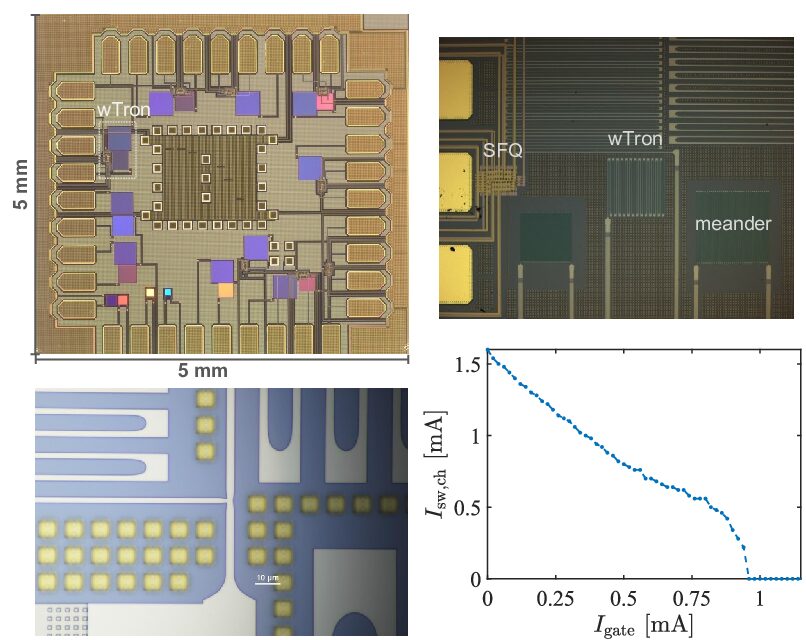
A new paper written by the group was recently published in Physical Review Applied.
Dip Joti Paul, Tony X. Zhou, Karl K. Berggren, “Photolithography-compatible three-terminal superconducting switch for driving CMOS loads,” Physical Review Applied, 24, 2, p. 024060, August 2025.
Abstract
Superconducting devices have enabled breakthrough performance in quantum sensing and ultralow-power computing. Nevertheless, the need for a cryoelectronics platform that can interface superconductor electronics with complementary metal-oxide-semiconductor (CMOS) devices has become increasingly evident in many cutting-edge applications. In this work, we present a three-terminal micrometer-wide superconducting-wire-based cryotron switch (wTron), fabricated using photolithography, that can directly interface with CMOS electronics. The wTron features an output impedance exceeding 1 kΩ and exhibits reduced sensitivity to ambient magnetic noise, similar to its nanoscale predecessor, the nanocryotron. In addition, its micrometer-wide wires support switching currents in the milliamp range, making it well suited to driving current-hungry resistive loads and highly capacitive CMOS loads. We demonstrate this capability by using the wTron to drive room-temperature CMOS electronics, including a light-emitting diode and a metal-oxide-semiconductor field-effect transistor (MOSFET) with a gate capacitance of 500 pF. We then examine the optimal design parameters required for wTrons to drive CMOS loads, such as MOSFETs, high-electron mobility transistors, and electro-optic modulators. Furthermore, to demonstrate the foundry readiness of the wTron, we fabricate wTrons using MIT Lincoln Laboratory’s SFQ5ee superconducting process and characterize their switching behavior. Our work shows that the wTron will facilitate the interface between superconductor electronics and CMOS devices, thereby paving the way for the development of foundry-compatible cryoelectronic ecosystems to advance next-generation computing and quantum applications.